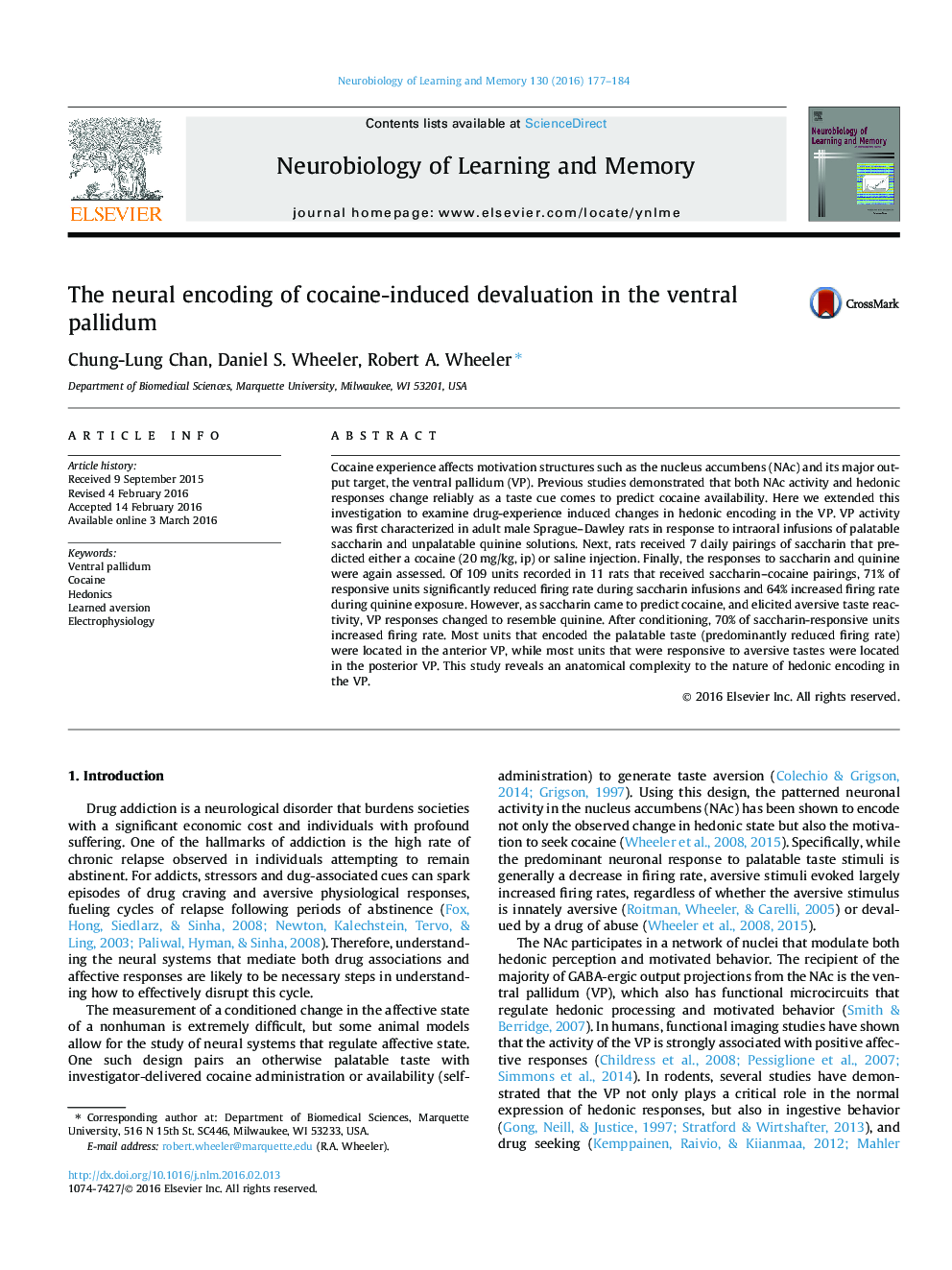| Article ID | Journal | Published Year | Pages | File Type |
|---|---|---|---|---|
| 7299198 | Neurobiology of Learning and Memory | 2016 | 8 Pages |
Abstract
Cocaine experience affects motivation structures such as the nucleus accumbens (NAc) and its major output target, the ventral pallidum (VP). Previous studies demonstrated that both NAc activity and hedonic responses change reliably as a taste cue comes to predict cocaine availability. Here we extended this investigation to examine drug-experience induced changes in hedonic encoding in the VP. VP activity was first characterized in adult male Sprague-Dawley rats in response to intraoral infusions of palatable saccharin and unpalatable quinine solutions. Next, rats received 7 daily pairings of saccharin that predicted either a cocaine (20Â mg/kg, ip) or saline injection. Finally, the responses to saccharin and quinine were again assessed. Of 109 units recorded in 11 rats that received saccharin-cocaine pairings, 71% of responsive units significantly reduced firing rate during saccharin infusions and 64% increased firing rate during quinine exposure. However, as saccharin came to predict cocaine, and elicited aversive taste reactivity, VP responses changed to resemble quinine. After conditioning, 70% of saccharin-responsive units increased firing rate. Most units that encoded the palatable taste (predominantly reduced firing rate) were located in the anterior VP, while most units that were responsive to aversive tastes were located in the posterior VP. This study reveals an anatomical complexity to the nature of hedonic encoding in the VP.
Related Topics
Life Sciences
Neuroscience
Behavioral Neuroscience
Authors
Chung-Lung Chan, Daniel S. Wheeler, Robert A. Wheeler,
